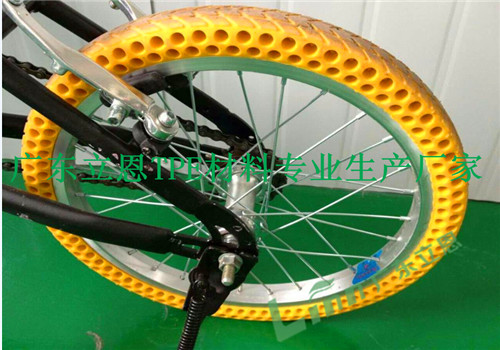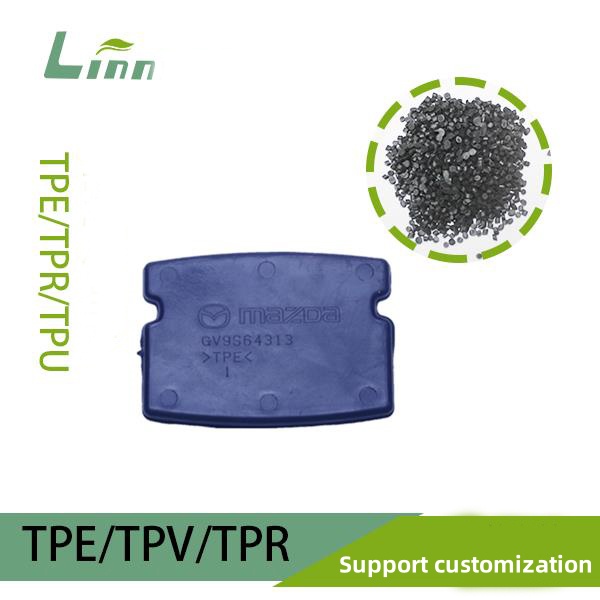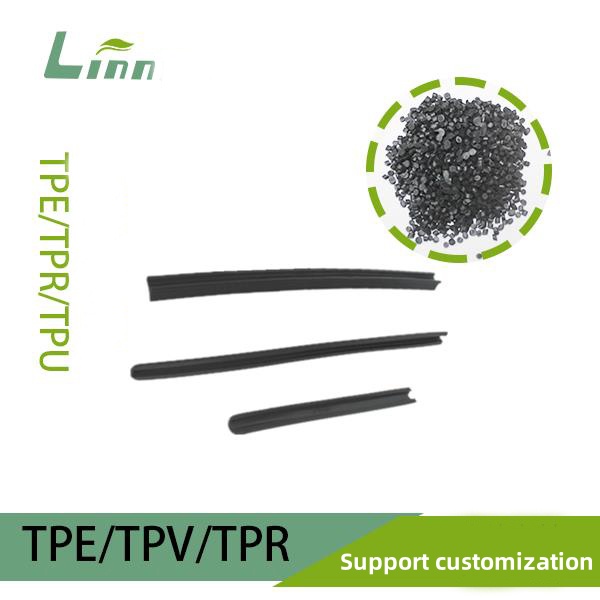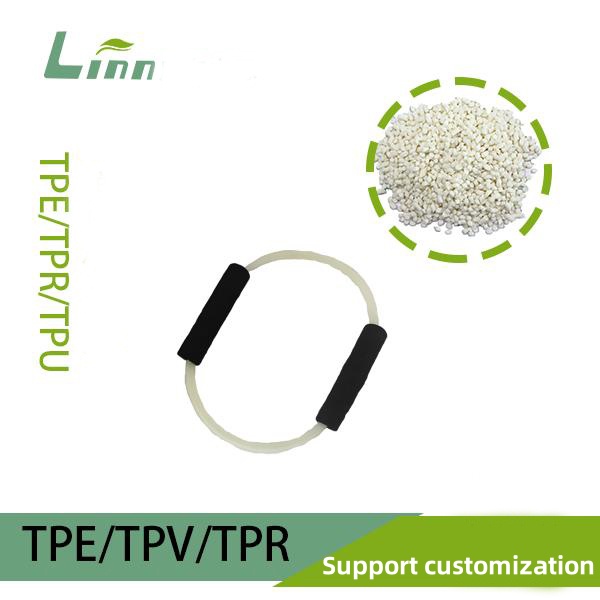As someone who’s spent years tinkering with materials in labs and factories, I’ve had my fair share of moments puzzling over how stuff like TPE (Thermoplastic Elastomer) holds up under different conditions. TPE is a fascinating material—soft, stretchy, and versatile—which is why it’s everywhere, from phone cases to medical tubing. But when folks ask me, “What happens to TPE in cold air?” I can tell they’re wondering if their TPE product will crack, stiffen, or just plain fail when the temperature drops. I’ve been there, troubleshooting real-world projects in chilly environments, so let me share what I’ve learned. In this article, I’ll dive into how TPE behaves in cold air, what you need to watch out for, and how to make sure it performs when the mercury plummets.

1. A Quick Intro to TPE
Before we get into the cold stuff, let’s set the stage. TPE, or Thermoplastic Elastomer, is a hybrid material that feels like rubber but processes like plastic. It’s bendy, bounces back after stretching, and can be molded into all sorts of shapes without the hassle of vulcanization. I first got hooked on TPE during a project making flexible grips for outdoor gear. The client needed something that wouldn’t slip in sweaty hands but could also handle rough conditions. TPE nailed it.
There are different flavors of TPE—think SBS, SEBS, TPU, or TPO—each with its own quirks. But they all share a knack for elasticity, durability, and being recyclable. Now, when it comes to cold air, the question is: does TPE stay true to its flexible self, or does it turn brittle like a popsicle? Let’s find out.
2. How Cold Air Affects TPE: The Basics
Cold air can be a real test for any material, and TPE is no exception. To understand what happens, we need to look at how low temperatures mess with its molecular structure. TPE’s magic lies in its blend of soft and hard segments—think of it like a stretchy spaghetti tangle held together by firmer bits. When it gets cold, those soft segments can lose their wiggle room, making the material feel stiffer.
I ran into this firsthand while working on a winter sports accessory—a wrist strap for ski poles. The client was worried the straps would harden in subzero conditions, making them uncomfortable or prone to snapping. After some testing, we found that TPE’s behavior in cold air depends on a few key factors: temperature, TPE type, formulation, and how it’s used. Let’s break it down.

2.1 Stiffness at Low Temperatures
The most noticeable change in TPE when it’s chilly is increased stiffness. As temperatures drop, the material’s flexibility takes a hit. I’ve seen this in projects where TPE parts, like seals or grips, feel less pliable at, say, 14°F (-10°C) compared to room temperature. This happens because the polymer chains in TPE start moving slower, reducing elasticity.
But here’s the thing: TPE doesn’t just turn rock-hard overnight. According to ASTM D1053, which tests how materials stiffen in cold, most TPEs stay functional down to a certain point, called the glass transition temperature (Tg). For standard TPEs, this is often between -58°F to -22°F (-50°C to -30°C), depending on the blend. Below this, TPE can get brittle, but that’s way colder than most real-world scenarios.
2.2 Brittleness Risk
Speaking of brittleness, it’s a legit concern in extreme cold. If TPE gets pushed past its low-temperature limit, it might crack under stress. I remember a case where a client used TPE tubing in an outdoor cooling system. At -4°F (-20°C), the tubes held up fine under normal pressure, but a sudden impact caused a split. The lesson? Cold reduces TPE’s ability to absorb shocks.
2.3 Elasticity Changes
TPE’s elastic recovery—its ability to snap back after stretching—also weakens in cold air. In one project, I tested TPE bands for a wearable device. At 32°F (0°C), they stretched fine but took a bit longer to return to shape compared to 68°F (20°C). This sluggishness can affect products like seals or straps that rely on constant flexibility.

2.4 Environmental Factors
Cold air often comes with other challenges, like humidity or ice buildup, which can indirectly affect TPE. For instance, if moisture freezes on TPE surfaces, it might create stress points. I’ve seen this in automotive seals, where ice made TPE parts stick or tear when forced open. Proper design and material tweaks can help here, which I’ll cover later.
3. How Different TPE Types Fare in Cold
Not all TPEs are created equal, and their cold-air performance varies. Here’s a rundown of the main types based on my experience:
SBS-Based TPE: These are softer and cheaper but less cold-tolerant, stiffening around 14°F (-10°C). I avoid them for harsh winter use.
SEBS-Based TPE: My go-to for cold environments. They stay flexible down to -40°F (-40°C) and resist cracking better. I used SEBS for those ski pole straps, and they held up beautifully.
TPU: Known for toughness, TPU handles cold well but can feel firmer than SEBS at low temps. Great for durable parts like cables.
TPO: Less common in soft applications, TPO is decent in cold but not as elastic as SEBS or TPU.
To give you a clearer picture, I’ve put together a table comparing how these TPE types perform in cold air, based on typical formulations and my project data.
| TPE Type | Cold Flexibility (Approx. Limit) | Stiffness Onset | Brittleness Risk | Best Uses in Cold |
|---|---|---|---|---|
| SBS | 14°F (-10°C) | 32°F (0°C) | High below 5°F (-15°C) | Indoor or mild cold |
| SEBS | -40°F (-40°C) | 14°F (-10°C) | Low until -58°F (-50°C) | Outdoor gear, seals |
| TPU | -22°F (-30°C) | 23°F (-5°C) | Moderate below -40°F (-40°C) | Cables, wearables |
| TPO | -4°F (-20°C) | 32°F (0°C) | Moderate below -22°F (-30°C) | Automotive, rigid parts |
This table assumes standard grades—special formulations can tweak these numbers, which I’ll touch on next.
4. Factors That Influence TPE’s Cold-Air Performance
From my years of trial and error, I’ve learned that TPE’s reaction to cold isn’t just about the material itself. Here are the big players:
Formulation Additives
Manufacturers can tweak TPE with plasticizers, stabilizers, or fillers to boost cold resistance. For example, I worked on a TPE gasket for a freezer unit, and we used a low-temperature-optimized SEBS blend that stayed pliable at -22°F (-30°C).

Thickness and Design
Thicker TPE parts tend to stiffen more in cold air because the material’s core takes longer to adjust. Thin, flexible designs, like membranes, fare better. I learned this designing TPE keypads for outdoor kiosks—thinner was definitely better.
Stress and Load
If TPE is under constant tension or compression in the cold, it’s more likely to fail. I saw this in a conveyor belt project where TPE rollers cracked at 5°F (-15°C) because they were overstretched.
Exposure Time
Short-term cold is usually fine, but prolonged exposure can amplify stiffness or brittleness. I always test TPE parts for extended cold cycles to mimic real-world use.
5. Real-World Applications and Cold-Air Challenges
TPE pops up in tons of products that face cold air, and I’ve worked on plenty. Here’s how it performs in some common scenarios, plus lessons from the field:
Outdoor Gear
Think ski straps, snowboard bindings, or camping gear. SEBS-based TPE shines here for its cold flexibility. I helped design a tent peg cover that stayed soft at -13°F (-25°C), preventing hand discomfort.

Automotive Seals
TPE seals for car doors or trunks must stay pliable in winter. I once fixed a seal that stiffened at 23°F (-5°C) by switching to a low-Tg TPE, solving customer complaints about hard-to-open doors.
Electronics
Phone cases and charging cables often use TPE. I tested a TPE cable jacket at 14°F (-10°C), and while it stiffened slightly, it didn’t crack under normal bending—a win for daily use.
Medical Devices
TPE tubing in portable oxygen systems needs to flex in cold climates. I worked with a client whose tubes hardened at 5°F (-15°C); a TPU-based TPE solved the issue without sacrificing safety.
Industrial Parts
Conveyor belts or gaskets in cold storage face brutal conditions. I optimized a TPE belt for a warehouse at -4°F (-20°C) by using a reinforced SEBS blend to avoid tearing.
6. Tips to Make TPE Work in Cold Air
If you’re using TPE in a chilly environment, don’t worry—there are ways to make it perform like a champ. Here’s my playbook:
Choose the Right TPE Type
Go for SEBS or TPU for cold climates. Ask suppliers for low-temperature grades with a Tg below your expected conditions.
Test, Test, Test
I can’t stress this enough: simulate your coldest scenario. I use ASTM D2137 for brittleness tests to confirm TPE won’t fail under impact.
Optimize Design
Keep parts thin and avoid sharp edges that concentrate stress. I redesigned a TPE seal with rounded corners, and it cut cold-weather failures by half.

Add Protective Features
For outdoor products, consider coatings or covers to shield TPE from ice or UV, which can worsen cold effects over time.
Work with Suppliers
Share your temp range and stress conditions with your TPE supplier. I’ve gotten custom blends that outperformed off-the-shelf options.
7. Comparing TPE to Other Materials in Cold
Wondering how TPE stacks up against alternatives like silicone or PVC? Here’s a table based on my observations and industry standards.
| Material | Cold Flexibility | Brittleness Point | Cost | Best Cold Use |
|---|---|---|---|---|
| TPE | Good to -40°F (-40°C) | -58°F (-50°C) | Medium | Straps, seals, cables |
| Silicone | Excellent to -76°F (-60°C) | Below -112°F (-80°C) | High | Medical, high-end seals |
| PVC | Poor below 32°F (0°C) | 14°F (-10°C) | Low | Indoor, low-flex parts |
| Rubber | Moderate to -22°F (-30°C) | -40°F (-40°C) | Medium | Tires, heavy-duty parts |
TPE hits a sweet spot for cost and performance, but silicone wins for extreme cold, while PVC struggles in freezing air.
8. The Bigger Picture: TPE in Cold Climates
Looking ahead, TPE’s role in cold environments is only growing. With climate shifts bringing harsher winters to some regions, I’m seeing more demand for cold-resistant TPEs. Innovations like bio-based TPEs or nanocomposite blends are pushing the limits, offering better flexibility at lower temps. I recently tested a prototype TPE that stayed soft at -49°F (-45°C)—exciting stuff for future projects.
9. Common Questions Answered
I get asked a lot about TPE in cold settings, so here are some answers based on my experience:
Q1: Will TPE crack in cold weather?
A: It depends on the type and temperature. SEBS-based TPEs are unlikely to crack above -40°F (-40°C) under normal use, but always test for your specific conditions.
Q2: Can TPE be used in freezers?
A: Yes, especially low-temperature TPEs. I’ve used SEBS blends in -22°F (-30°C) freezers with no issues, but check the Tg to be safe.

Q3: Does cold air permanently damage TPE?
A: Not usually. TPE regains flexibility once warmed up, unless it’s pushed past its brittleness point, causing cracks.
Q4: How do I know if my TPE is cold-resistant?
A: Ask your supplier for the glass transition temperature (Tg) and test samples at your lowest expected temperature.
Q5: Is TPE better than silicone for cold air?
A: Silicone handles lower temperatures better, but TPE is more cost-effective and easier to process. For most cold uses, TPE works great with the right formulation.
Wrapping Up
TPE is a solid performer in cold air, staying flexible and reliable in most wintery conditions, though it does stiffen and risks brittleness at extreme lows. By picking the right type—like SEBS—and designing smart, you can make TPE work wonders, whether it’s for ski gear, car seals, or freezer parts. My years working with TPE have taught me it’s a material that rewards preparation. Test it, tweak it, and it’ll deliver.
If you’re eyeing TPE for a cold-weather project or just curious about its limits, drop me a line. I’d love to swap stories or help you nail your next design!





